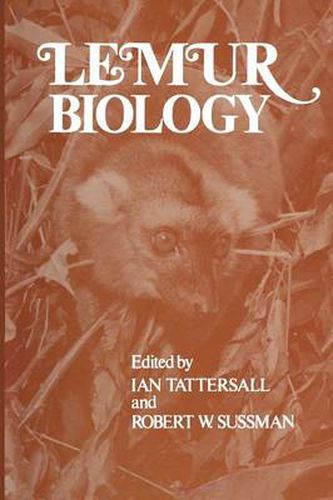Readings Newsletter
Become a Readings Member to make your shopping experience even easier.
Sign in or sign up for free!
You’re not far away from qualifying for FREE standard shipping within Australia
You’ve qualified for FREE standard shipping within Australia
The cart is loading…






This title is printed to order. This book may have been self-published. If so, we cannot guarantee the quality of the content. In the main most books will have gone through the editing process however some may not. We therefore suggest that you be aware of this before ordering this book. If in doubt check either the author or publisher’s details as we are unable to accept any returns unless they are faulty. Please contact us if you have any questions.
The volume of studies on prosimian primates has, until recently, tended to lag well behind that of studies on the higher primates. This is so despite the fact that the considerable intrinsic interest of the living prosimians and the signifi cance of their stuQ,y for our understanding of the earlier stages of primate evolution have long been acknowledged by zoologists, paleontologists, and anthropologists alike. Among the prosimians, the Malagasy lemurs are of profound interest not only because they include the only extant diurnal forms, but also because it is only on Madagascar that the absence of competition with higher primates has allowed a surviving prosimian fauna to radiate, es sentially unrestricted, into a broad spectrum of ecological zones. In contrast, the few extant prosimians of Africa and Asia occupy a relatively narrow range of refuge niches; although of considerable interest in themselves, they do not show the richness and variety of adaptation which make the Malagasy prosimian fauna such a fascinating object of study. Over the past few years, however, there has been a considerable resur gence of interest in the prosimians in general, and in the lemurs in particular. The range of studies resulting from this rekindling of interest is wide, compre hending the systematics, evolution, anatomy, behavior, and ecology of these forms. This volume constitutes a progress report on our knowledge of the le murs.
$9.00 standard shipping within Australia
FREE standard shipping within Australia for orders over $100.00
Express & International shipping calculated at checkout
This title is printed to order. This book may have been self-published. If so, we cannot guarantee the quality of the content. In the main most books will have gone through the editing process however some may not. We therefore suggest that you be aware of this before ordering this book. If in doubt check either the author or publisher’s details as we are unable to accept any returns unless they are faulty. Please contact us if you have any questions.
The volume of studies on prosimian primates has, until recently, tended to lag well behind that of studies on the higher primates. This is so despite the fact that the considerable intrinsic interest of the living prosimians and the signifi cance of their stuQ,y for our understanding of the earlier stages of primate evolution have long been acknowledged by zoologists, paleontologists, and anthropologists alike. Among the prosimians, the Malagasy lemurs are of profound interest not only because they include the only extant diurnal forms, but also because it is only on Madagascar that the absence of competition with higher primates has allowed a surviving prosimian fauna to radiate, es sentially unrestricted, into a broad spectrum of ecological zones. In contrast, the few extant prosimians of Africa and Asia occupy a relatively narrow range of refuge niches; although of considerable interest in themselves, they do not show the richness and variety of adaptation which make the Malagasy prosimian fauna such a fascinating object of study. Over the past few years, however, there has been a considerable resur gence of interest in the prosimians in general, and in the lemurs in particular. The range of studies resulting from this rekindling of interest is wide, compre hending the systematics, evolution, anatomy, behavior, and ecology of these forms. This volume constitutes a progress report on our knowledge of the le murs.